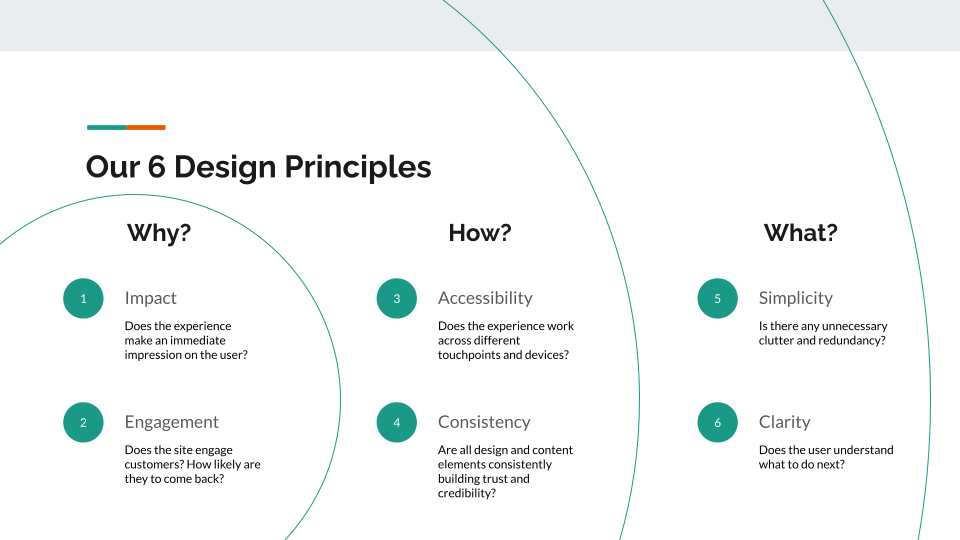Presenting a website design audit can go sideways fast without the right tone, context, and rationale. This sample presentation can give you a head start.

Website Design Audit Overview
What Is A Website Design Audit?
A website design audit may be called by many names, but fundamentally it is a deep review of the current website experience as well as competitive websites in the same or similar industry.
The goal of the website design audit is to evaluate the effectiveness of the user experience across a number of areas including its content architecture, interface design, information architecture and navigability, user engagement, search engine performance, and accessibility.
When Should You Do A Website Audit?
A website audit is typically done either as a lead-up to a website redesign project being authorized into existence (example: as part of a business case that feeds a request for proposals, or RFP) or during the initial discovery phase of a project (example: to formulate the creative strategy leading into UX and UI design activities.
Ultimately, the findings of the website design audit should inform the redesign effort using a more methodical, research-focused approach rather than relying on the opinions of project stakeholders who may not be experts in design.
Website Design Audit Presentation Guide
This particular slide deck is a sample of a presentation from an agency to a public sector client during the discovery phase of a website redesign project. It is a roll-up of several analyses done as part of the Discovery phase including:
- A comparative analysis
- A content audit
- A website heuristics analysis
- An analytics & SEO audit
The purpose of the presentation was to communicate key findings and recommendations from the agency team’s analyses in a 90-minute meeting. Each analysis’ full report was provided separately prior to the meeting.
How To Create A Website Design Audit Presentation
The website design audit presentation is generally a summary of the various audits conducted.
- Make sure your stakeholders are aligned on the website design audit activities to be conducted and the methods or frameworks to be used
- Have your team conduct the agreed upon audits, being sure that every audit has clear goals and objectives that relate to the project goals and objectives
- As the audit complete, bring your team together to share and discuss their insights with others on the team to find common themes and points of intersection between the findings
- Agree on a format and narrative structure for the presentation deck — ideally one that explains the goals, approach, findings, and recommendations consistently for a non-SME audience
- Have your team collaborate on the presentation content using content from their respective audits
- Review as a team throughout the collaboration process, editing iteratively so that the information is succinct and digestible for an executive audience
- Decide who is going to be presenting each part, and rehearse to be sure that time isn’t wasted in the presentation with clumsy transitions
- Package and deliver the full audits and reports to presentation attendees prior to the meeting as a pre-read so that they have the opportunity to come to the table informed and ready with questions
